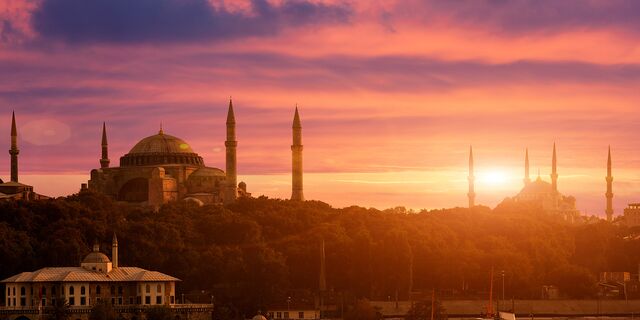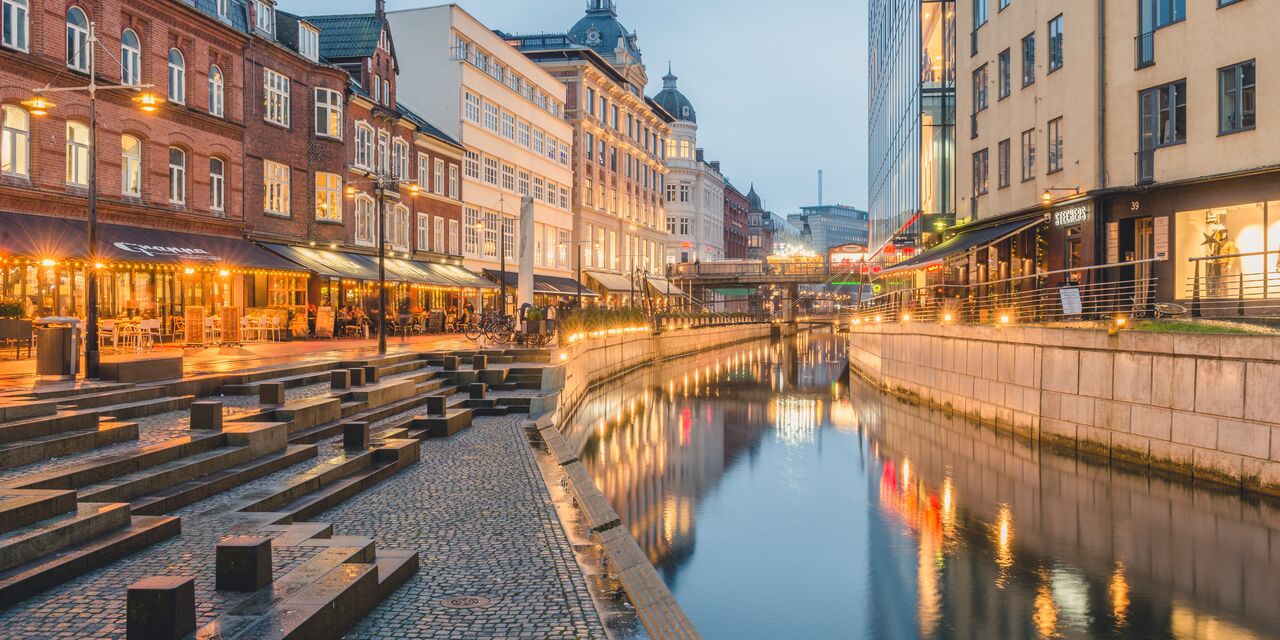From church to secular museum
When you enter the Hagia Sophia it takes a moment to adjust to the dim light. During the restoration, the windows that once let in natural light were bricked up. The church is illuminated by a large number of lamps. The glass and gold of the famous mosaics are beautifully lit in the glow of the flickering lights. These mosaics are spread over various corners of the building. In the sparkling light the tiles almost seem to be moving. Although the gold-coloured mosaics are one of the artistic highlights of the Hagia Sophia, they were not always visible. Until 1453, the church with its Byzantine wall paintings and mosaics was a Christian house of prayer, but when Mehmet II conquered Constantinople, the building was immediately transformed into a mosque. He removed all of the relics, added minarets to the building and replaced the cross on top of the dome with a crescent moon. The new leader ordered the wall paintings and mosaics to be covered with white plaster. It was Mustafa Kemal Atatürk, the founder of modern Turkey, who brought back these beautiful works of art. In 1934 he transformed the mosque into a secular museum and had the plaster removed, revealing the hidden artwork once again. Visitors can still clearly see the remnants of the former mosque. The dome contains scriptures from the Koran and in the rear of the museum stands a ‘minbar’ or pulpit. There are numerous large green wooden shields that display the holy Islamic names of God, the prophet Mohammed and the first 4 representatives of God on earth, written in gold letters. Combined with the early Christian art, it makes for a unique entity.
A healing pillar
Large crowds often gather at the entrance to the museum. They are queuing for the ‘wishing column’, a pillar that looks to be perspiring. A legend that dates back to before 1200 says that ever since Gregorius the Healer appeared here, the moisture from this pillar has healing powers. Many visitors still place their thumb over the worn area on the pillar; the daily rubbing by so many visitors has left the copper shining like gold.
























